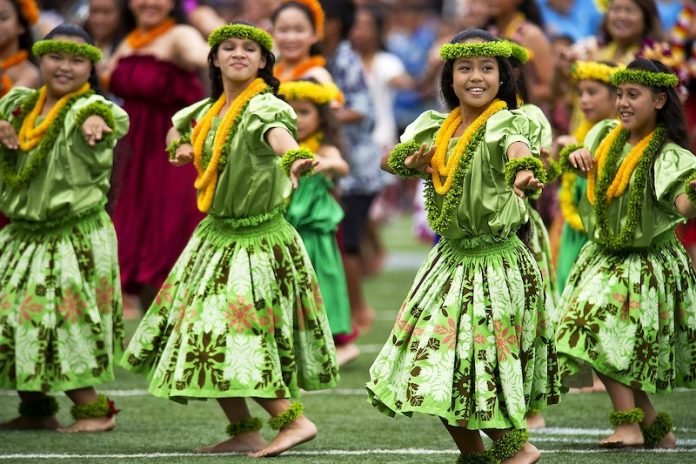
In a new study, researchers found native Hawaiians who incorporated their cultural dance of hula into a blood-pressure-lowering program lowered their blood pressure more than those who received standard education on diet and exercise.
The research was conducted by a team from the University of Hawaii at Manoa in Honolulu.
Despite medical treatment of hypertension, many Native Hawaiians have difficulty controlling their high blood pressure, which increases their risk of coronary heart disease and stroke.
In previous research, the team had found that typical lifestyle programs aimed at lowering blood pressure are less attractive to Native Hawaiians.
The people find the activity components boring or expensive and the dietary goals unrealistic and difficult to sustain over time.
In the new study, the team created an intervention based on hula, the traditional dance of Native Hawaiians, which can be performed at different levels of intensity by men and women of all ages and is practiced as a form of cultural and creative expression.
The researchers recruited more than 250 Native Hawaiians (average age 58 years, 80% female) who, although under medical treatment for high blood pressure, still had a systolic (top number) blood pressure of 140mmHg or higher or had a systolic blood pressure of 130mmHg or higher and also had type 2 diabetes.
After three one-hour sessions of hypertension education that included information on diet, exercise and the use of medications, participants were randomly assigned to a control group that received no further additional intervention or to the hula intervention.
Hula participants attended one-hour group hula classes twice a week for three months, followed by one monthly lesson for three additional months with self-directed practice, as well as group activities to reinforce hypertension education and healthy behaviors.
All participants continued their usual medical treatment during the study.
The team found the Hula group was more likely to have lowered their blood pressure to under 130/80 mmHg.
They were also more likely to have lower systolic (top number) blood pressure more than 10 mmHg, an amount that significantly reduces the risk of heart attack, stroke and heart failure.
They were able to sustain their improvements in blood pressure at one-year follow-up, which was six months after the study’s hula classes ended.
In addition, the participants said the hula was fun and helped meet their spiritual and cultural needs.
More than 80% stayed with the program for six months and 77% were still at it 12 months in, which reflects a high interest in a culturally grounded program like this.
The team says these results reinforce the idea that for most people, the best physical activity for your health is one that makes you breathe a little faster and gets your heart beating a little faster.
Whether that’s dancing, biking, swimming, surfing, or hiking, the key is to move more and more often. Being active with friends and family can help sustain healthy fun over time.
The lead author of the study is Keawe‘aimoku Kaholokula, Ph.D.
The study was presented at the American Heart Association’s Hypertension 2019 Scientific Sessions.
Copyright © 2019 Knowridge Science Report. All rights reserved.



